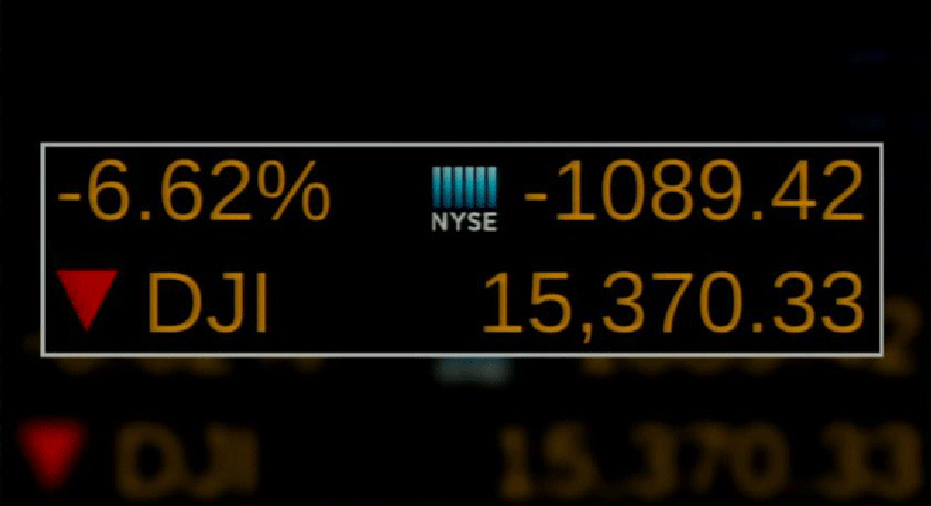'Mini Flash Crash' One Year Anniversary & ETF Industry Efforts to Prevent a Repeat

As the market approaches the one-year anniversary of the August 24 sell-off, exchange traded fund providers and market exchanges have come together to outline new rules for more orderly early morning trades to avoid another mini flash crash.
"While executives at the three exchanges laid out the improvements made to the securities market, it remains unknown what the next unexpected event will be to cause extremely volatility," Todd Rosenbluth, S&P Global Market Intelligence Director of ETF Research, said in a note. "Yet efforts by the exchanges have limited the likelihood that something like Aug. 24 will have a similar impact on stocks and ETFs."
On August 24, heightened market volatility triggered by concerns over the Chinese economy fueled an overwhelming percentage of sellers flooding the markets. The Dow dropped over 1,000 points intra-day before rebounding to close down 588. Securities and Exchange Commission economists have blamed the volatility on a perfect combination of heightened trading volume and a withdrawal of liquidity by market makers.
Meanwhile, interconnected markets experienced inconsistent rules around trading halts, which affected market liquidity - an abnormally high 1,278 trades were halted. Along with the trading halts, the late New York Stock Exchange open also contributed to the reliability of pricing sources used to value derivatives.
Consequently, ETFs experienced some of the most severe price declines as market makers struggled to price derivatives due to uncertainty over tradability and pricing of hedges. Many ETFs that typically traded in line with their net asset value were negatively affected as trades on some of their underlying stock holdings were halted - the ETFs' prices showed large divergences to their NAV.
In response, market participants and ETF sponsors have been working with exchange to work together to put in place rules to diminish the likelihood of a repeat mini flash crash event.
"Given the stakes, we decided to take the initiative with other market participants to build a coalition to address market structure issues that need to be addressed and have a unified voice with the exchanges and regulators to help expedite positive change," Jim Ross, Vice President of SSGA and Chairman of the Global SPDR business, told S&P Capital IQ.
SSGA Funds Management has worked on proposed remedies alongside other asset managers, including Blackrock (NYSE:BLK), Charles Schwab (NASDAQ:SCHW), Franklin Templeton, JP Morgan (NYSE:JPM), SSGA Funds Management, Vanguard Group, and Wellington Management Company.
"Harmonized rules will help improve trading for all equity securities and promote price discovery after markets have been halted during times of stress," according to BlackRock.
Meanwhile, the three major exchanges - Bats Global Market, Nasdaq (NASDAQ:NDAQ)and New York Stock Exchange (NYSE:ICE) - announced they were working to harmonize key functions of the U.S. equity market to offset risks during times of extreme volatility, including the elimination of the so-called limit up limit down rules in place, standardization of primary exchange automated re-openings following trading halts and an end to erroneous execution rules when individual security trading halts are in effect.
"One of the positive effects of August 24 was clarification of the rules when trades will and will not be broken if they happened inside 'limit up limit down' bands," Reggie Browne, Head of ETF Trading at Cantor Fitzgerald, told S&P Capital IQ. "Today, there is increased confidence by liquidity providers when to interject into the market."
The U.S. Securities and Exchange Commission has already approved plans to allow the New York Stock Exchange to speed up and smooth out early morning trades during more volatile conditions. The SEC said the NYSE could allow stocks to open for trading on particularly volatile days without the need of clear price disclosure that is normally required before trading opens.
The newly approved procedures would remove Rule 48, which has been largely blamed for the August 24 event, and set up guidelines for when shares could open or be reopened after a trading halt, which in theory would allow for more immediate trading. Stocks will still be opened without pre-market indicators if they were set to trade within 5% of previous day’s close. On volatile days, shares could open as long as prices were within 10% of previous close.
This article was provided by our partners at etftrends.com.